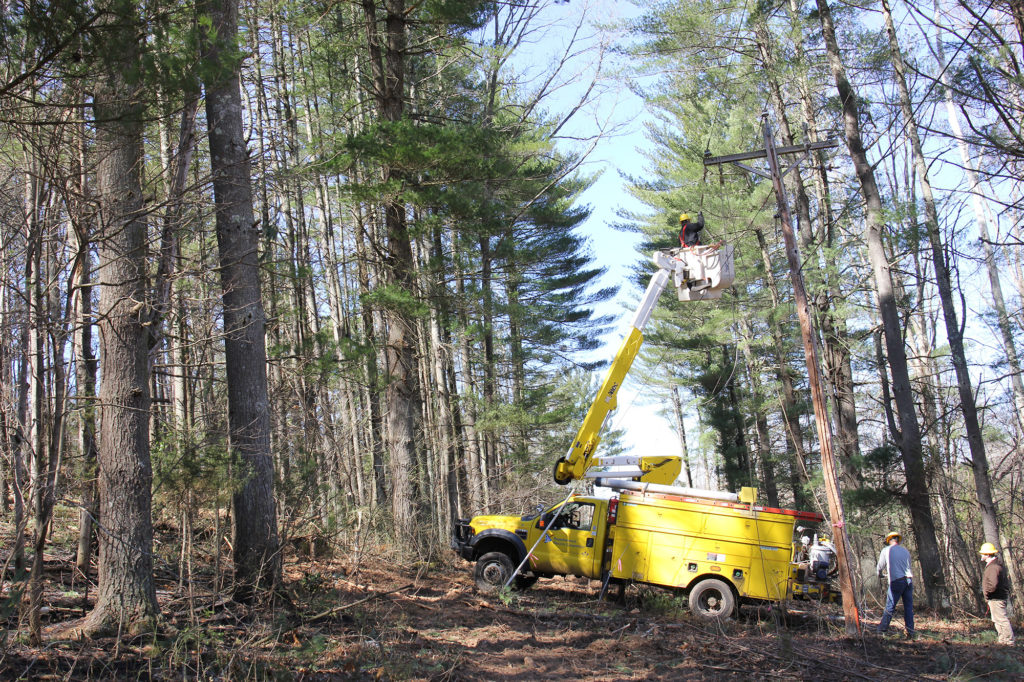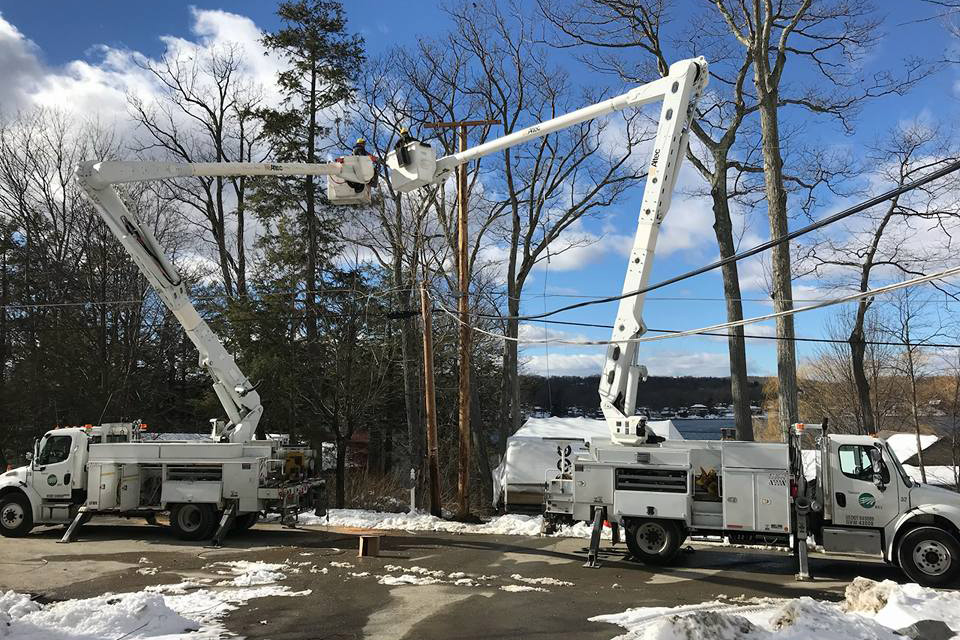
Hurricane-force winds knocked out electricity to nearly 2.5 million people from the Great Lakes to the Mid-Atlantic regions and in New England late last week, and electric cooperatives in some of the hardest-hit areas still have crews working to restore service.
“This is the worst weather event to hit our service territory since Superstorm Sandy,” said Chris Reese, CEO of New Jersey’s Sussex Rural Electric Cooperative, which lost about 5,000 of its 12,000 meters.
New Jersey’s only electric co-op had crews out early March 5 restoring service to just over 100 members who were still without power, but in some cases, 400 to 600 feet of new line will have to be installed and energized before service is restored.
The first outages began before noon on March 2, and operations had already arranged for mutual aid crews from co-ops in western and central Pennsylvania.
“We had 10 broken poles, and Asplundh tree crews needed a 70-foot-tall bucket truck to deal with one tangle of downed trees before crews could restore power,” said Reese.
Several co-ops in Virginia reported widespread outages.
“We had more than 40,000 meters out Friday afternoon,” said Casey Hollins, director of communications and public relations for Rappahannock Electric Cooperative. “Winds snapped dozens of poles and downed trees, making it difficult for crews to reach some locations.”

Crews from the Fredericksburg, Virginia, co-op received mutual aid from co-ops in Kentucky, North Carolina and South Carolina. Restoration was stalled in some areas until the Virginia Department of Transportation could clear tree debris and reopen roads.
“We still have about 8,000 meters out, but hope to wrap up restoration by Wednesday,” Hollins said March 5. Member services representatives and social media posts urged members to check the co-op’s outage maps for information on specific trouble locations across the co-op’s 22-county territory.
Virginia’s Northern Neck Electric Cooperative reported nearly 6,500 of its meters out March 2, said Jay Garner, manager of public relations for the Warsaw-based co-op. “With the help of co-op crews from Kentucky and Georgia, our crews worked day and night, and wrapped up the work Sunday afternoon with all members restored.”
Crewe, Virginia-based Southside Electric Cooperative lost nearly 20,000 meters to high winds and falling trees that splintered 35 poles and shredded power lines.
Crews worked around the clock from late Thursday night restoring power until Sunday evening, said Ronald White, vice president of member and public relations for SEC.
The storm, blamed for at least five deaths, disrupted flight schedules and rail transportation along the East Coast before winds subsided March 3. Electric utility crews were still working March 5 to restore service to nearly 500,000 meters in several states.
Co-ops expressed relief that total system damage was not more extensive.
Many compared the winter event to Superstorm Sandy, a massive weather system that began as a tropical depression in October 2012 before becoming a hurricane and morphing into a subtropical weather event. That storm brought high winds, freezing rain, snow and major flooding to parts of 21 states, knocking out electricity to 8.5 million meters that took months to repair.
“We had 5,000 members out at the height of the storm,” said Jeremy Tucker, manager of communications for Delaware Electric Cooperative in Greenwood, Delaware. “We had 10,000 meters out after Hurricane Sandy, and 20,000 after Hurricane Ike.”
While co-op officials are pleased at how their systems held up under the 60- to 70-mph sustained winds, winter is not over, and high winds are forecast for the Mid-Atlantic region by late this week.
“This was essentially a 24-hour event for us,” said Tucker, noting that all affected members had power restored March 3. “Our crews train for this, it is what they do, and they do it well. Hopefully, this next storm won’t cause major problems.”
Derrill E. Holly is a staff writer at NRECA.